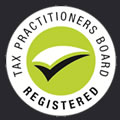24th December 2024
Only the ones you want to claim as a tax deduction, might be a common response.
Work-related expenses
But that isn’t quite right, as the tax rules in fact enable you to make legitimate claims for work-related expenses for up to $300 in a financial year without having receipts, provided:
- you have spent the money;
- the expense is directly related to earning your income;
- you haven’t been reimbursed by your employer;
- it is not of a private or capital nature; and
- you have a record of the expense (other than a receipt).
Work-related expenses can include, among other things, tools and small items of equipment, office supplies, union or professional association fees, uniforms and protective clothing and associated cleaning costs, newspapers and periodicals and many more.
The cost of laundering work uniforms and protective clothing can be included without having receipts for an amount of up to $150. These costs form part of the $300 deductible limit without needing receipts. However, where total work-related expenses exceed $300, it is not necessary to have receipts in relation to costs for laundering work uniforms for these expenses if they do not exceed $150. The ATO will accept a rate of $1 per load where the laundry is done at home, or half that amount when accompanied by private items. Dry cleaning costs are not included in the receipt-free $150. Minor items costing up to $10 can be claimed without a receipt, up to $200 per financial year, and are also included in the $300 limit. But again, where total work-related expenses exceed $300, it is not necessary to have receipts for these costs.
The record of the expense can be in the form of a diary that records how much you have spent, what you spent it on, how you paid for it and how it relates to earning your income. You will need to retain those records for five years.
Of course, there is nothing wrong with keeping all your receipts as you go along, just in case you unexpectedly overshoot the $300 limit later in the financial year. Where that happens, you will need receipts and invoices to substantiate your entire work-related expense claim – not just for the excess over $300.
Car expenses
Instead of keeping receipts and invoices for the actual running costs of the employment-related use of your own car, you can elect to claim on a cents per kilometre basis for up to 5,000 business kilometres. The rate you can claim is 88 cents per kilometre for the 2024-25 financial year (the maximum claim is $4,400).
The claimable use of a private car covers situations where, for example:
- you visit a client’s premises after arriving at your usual place of work;
- you’re working at another location that is not your usual place of work; or
- you drive to a work-related conference.
The cost of driving between home and work is generally regarded as a private expense.
You won’t need any receipts to claim on a cents per kilometre basis, but you do have to be using your own car and you will need to maintain a logbook or a diary that records your employment-related car use. Where two taxpayers use the same car for their respective work-related purposes they can each claim for up to 5,000 kilometres.
It also needs to be a requirement of the employer that you provide your own transport for work-related purposes. There was a recent AAT case where the applicant’s cents per kilometre claim failed spectacularly when it emerged in evidence that the employer provided a company car for traveling between different work sites.
Note this is not a standard deduction anyone can just claim. The ATO has previously made noises about how it has noticed there are many claims right on the cusp of the 5,000 kilometre limit and has been actively challenging some claims.
Working from home
With many employees still working from home in the wake of the COVID-19 pandemic, at least on a part-time basis, the ATO has developed an administrative method for claiming associated expenses. Working from home for the purpose of making a claim has to involve something substantive – minimal tasks such as occasionally checking emails or answering phone calls while at home are not regarded as enough.
While the option is always there to make a claim using the actual cost method (which would require receipts), taxpayers can also opt for the fixed rate method, which has been set at 67 cents per hour since 2023. The 67 cents per hour rate covers:
- energy costs;
- internet expenses;
- mobile and landline expenses; and
- stationery and computer consumables.
Depreciation on office furniture, computers and printers is available on top of the fixed rate deduction, as are repairs to those items. Since those claims fall outside the fixed rate method they will need to be supported by receipts or invoices.
A crucial requirement to qualify for the fixed rate method is to keep a diary or a timesheet of the hours worked from home during the financial year. This record needs to be maintained throughout the year – making an estimate at tax time will not be sufficient.
While you won’t need comprehensive receipts for the various items covered by the fixed rate method, the ATO will expect you to retain a sample copy of an invoice, bill or bank statement verifying you have incurred each of the expenses covered by the fixed rate method. All the information has to be retained for five years.
The Commissioner doesn’t like work-related expenses much, but Australian taxpayers love them which is why governments have been wary of getting rid of them.
While there are a number of specific exceptions to the need to have receipts to substantiate particular claims, all these “concessions” come with conditions attached, mainly to ensure that the expenses were actually incurred in earning assessable income. It’s important to be aware of all the legal and administrative requirements so that your work-related expense claim can survive an ATO audit.




